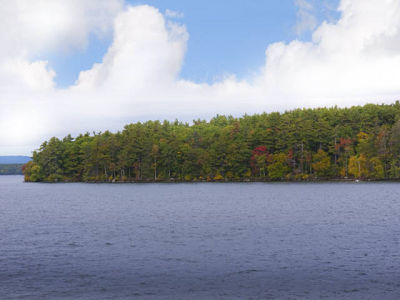MADISON — The state is revising its long-term fisheries management plan for Wisconsin’s Lake Michigan waters and invites citizens to provide input during a second round of public review. Lake Michigan has seen drastic ecological changes in recent years and the new plan will guide fisheries management through the next 10 years.
“We listened to what the public said during an initial public input session and incorporated some of those ideas along with our own thoughts in this draft 10-year plan,” said Brad Eggold, Lake Michigan fisheries supervisor for the Wisconsin Department of Natural Resources. “Now, it’s time to see whether we are on track with the expectations and desires of the public. We’re planning a second round of meetings in early August to give stakeholders additional opportunities for input.”
http://dnr.wi.gov/topic/Fishing/lakemichigan/LakeMichiganIntegratedFisheriesManagementPlan.html
The meetings are set for:
Monday, Aug. 4, from 6 to 8 p.m., Wisconsin DNR Green Bay Service Center, 2984 Shawano Avenue, Green Bay, WI, 54313
Tuesday, Aug. 5, from 6 to 8 p.m. at Lakeshore Technical College, 1290 North Avenue, Cleveland, WI, 53015
Thursday, Aug. 7, from 6 to 8 p.m. at UW–Milwaukee GLRF-SFS, 600 E. Greenfield Avenue, Milwaukee, WI, 53204
Thursday, Aug. 7, from 6 to 8 p.m. at Wisconsin DNR Peshtigo Service Center, 101 N. Ogden Road, Peshtigo, WI, 54157
Wisconsin’s DNR manages Lake Michigan fisheries in partnership with other state, federal and tribal agencies and in consultation with the public, particularly sport and commercial fishers. The draft 2015-2024 Lake Michigan Integrated Fisheries Management Plan focuses on five areas or visions for the future:
• A balanced, healthy ecosystem. This vision focuses on protecting and maintaining habitat while minimizing the effects of invasive species.
• A multi-species sport fishery. This vision includes sustaining a salmon and trout species mix that supports sport harvests. Other elements include improvements to the statewide fish hatchery system that produces fish for Lake Michigan and enhanced near-shore fishing opportunities.
• A sustainable and viable commercial fishery. This aspect of the plan centers on maintaining the current number of commercial fishing licenses at 80 while adjusting harvest limits to sustain viable populations of key commercial species such as lake whitefish, yellow perch, round whitefish, rainbow smelt and bloater chubs over time.
• Application of science-based management principles. This vision recognizes the ongoing need for staff training, the ability to employ continually evolving tools and modeling technologies, inter-jurisdictional cooperation and the involvement of trained scientists as well as public stakeholders.
Effective internal and external communication. This vision focuses on maintaining a full and open exchange of information and ideas among the public, elected officials, fisheries managers and neighboring states.
“Over the last 10-year planning cycle, we have made good progress and accomplished much of what we set out to do in our previous plan,” Eggold said. “We’ve managed chinook salmon populations to fuel a decade of fantastic fishing. Supplies of trout and salmon for stocking have been enhanced following renovation of the Wild Rose State Fish Hatchery while sturgeon and musky stocking also has improved. In addition, we’ve removed some barriers to fish passage and constructed a natural fish passage on the Milwaukee River.”
However, over the last decade Lake Michigan has undergone major ecological changes and is less productive due to the arrival and proliferation of the exotic quagga mussel. These small freshwater mussels remove large quantities of plankton as they filter the water, short circuiting the food chain and ultimately leaving less for prey fish to eat while negatively impacting some important fish species such as yellow perch.
Beyond the difficulties caused by invasive species, an additional challenge is the need to maintain, update and operate the state’s fish production system, including renovating the Kettle Moraine Springs State Fish Hatchery in Sheboygan County, which produces all the steelhead rainbow trout stocked in Lake Michigan.
“Given the challenges and opportunities before us, input from anglers and others is critical in developing a plan that keeps Lake Michigan healthy and reflects the interests of sport and commercial anglers,” Eggold said.
People who are interested in commenting can find the draft plan and summary information on the DNR’s website, dnr.wi.gov, by searching for “Lake Michigan Plan.” In addition to providing verbal comments at the public meetings, written comments can be sent to a special email address created for the plan: DNRLakeMichiganPlan@Wisconsin.gov. Written comments also can be mailed to: Brad Eggold, Department of Natural Resources, Great Lakes Water Institute, 600 E. Greenfield Ave., Milwaukee, WI, 53204.
CONTACTS: Brad Eggold, Lake Michigan fisheries supervisor, Bradley.Eggold@wisconsin.gov, (414) 382-7921; Michael Donofrio fisheries supervisor, Michael.Donofrio@wisconsin.gov, Jennifer Sereno, communications, (608) 770-8084; Jennifer.Sereno@wisconsin.gov

